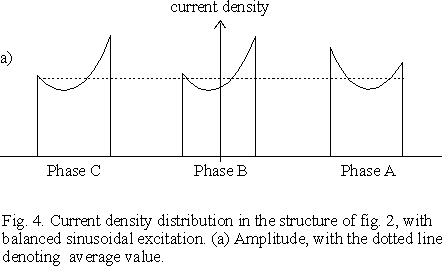Hi.
Gepman, Waross your's explanation is eql. to 7another4, but in other word.see attached.
In one reported instance, a nominal total load of 2,300 amperes was being transmitted through three pairs of cable. One pair was found to be carrying 742 amperes, a second pair 441, and the third pair 550.
In another industrial plant, a circuit rated for 4,000 amperes was transmitting only 3,000 through paired cables installed as an emergency replacement for a failed bus duct. Soon after being energized, some of them became so hot they started smoking. To correct the problem, the individual phase conductors had to be bundled to balance their electrical positions , and the entire bundle then twisted through 3600 between the two ends of the circuit.
In 1996, an engineer reported even more extreme unbalance of four to one in currents through paralleled conductors of the same length. In his words: "That means of course, if you are counting on two 500 MCM conductors to carry 800 amperes, one may have 640 amperes on it while the other has only 160."
What the Code states
This is especially likely to occur in cable tray circuits, common in process industries. The National Electrical Code deals with the situation in Section 310.4, "Conductors in Parallel," mandating that each be of the same length, material, cross-sectional area, and insulation type, as well as being "terminated in the same manner." (This is most important for sizes 1/0 AWG and larger, intended for higher currents and consequently strong magnetic fields.)
In a "Fine Print Note," the Code also points out that "difference in inductive reactance and unequal division of current can be minimized by ... orientation of conductors." What the Code does not say (because it avoids answering "design" questions) is how proper orientation can be achieved. The basic principle is to make sure the flux linkages surrounding each parallel path will balance themselves out over the circuit length. These conditions should be met:
* If multiple raceways are needed, the same numbers of identical conductors must be contained within each one.
* The individual phase conductors should be grouped so that each occupies the same relative position in turn throughout the circuit length. In other words, "transposition" is necessary.
Regards.
Slava


